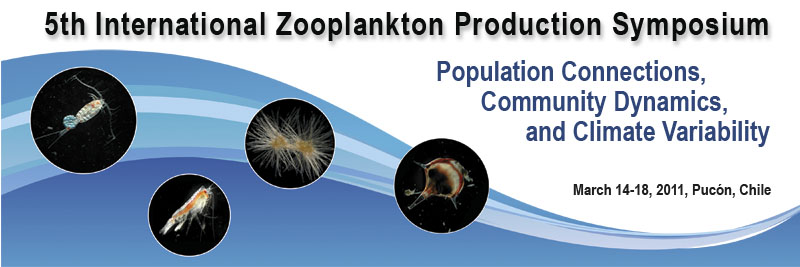Harold P. Batchelder (Oregon State University,
USA)
Douglas C. Speirs (University of Strathclyde, UK)
Invited Speaker:
Wendy C. Gentleman (Dalhousie University, Canada)
This workshop will review the use of individual-based
models (IBMs) in zooplankton ecology, and the ongoing
debate between those favouring density-based population models and those
favouring more flexible, but more
complex, simulation approaches.
Individual-based models are population models in which individual organisms,
or quasi-individuals representing
homogeneous groups of individuals, are explicitly represented as discrete
elements of a computer simulation.
Individuals have their own state variables (or i-state configuration),
such as age, size, developmental stage,
and physiological condition; population-level dynamics arise as emergent
properties of the interactions among
individuals and between individuals and their environment. This approach
contrasts with population-level
models (PLM), or aggregated mathematical models, in which population
processes are described by relationships
between densities of individuals. Although PLMs can represent individual
properties, they do so through an i-state
distribution over a population rather than explicitly representing individuals.
One of the main appeals of IBMs is that they
provide an easy way of capturing population heterogeneity, or
inter-population variability, because stochastic processes impacting
individuals can readily be incorporated into
simulations. When non-linear rate processes, the functional feeding
response for example, determine population
growth, the mean behaviour need not necessarily correspond to that predicted
by using the underlying mean
rates in a deterministic PLM. Because corresponding IBMs represent population
heterogeneity explicitly and
the population level outcomes emerge from this, such difficulties are
side-stepped. A second advantage is that
is much easier to introduce behavioural rules, especially those relating
to movement, which can be extremely
hard to represent in PLMs in a mathematically compact way. The inclusion
of diel vertical migration in IBMs of
marine zooplankton, for example, has helped to demonstrate the importance
of such behaviour in the retention of
populations in productive coastal upwelling zones.
The most fundamental difference between IBMs
and PLMs is the continuum assumption underlying PLMs. At high
trophic levels, when individual organisms are sparse, the concept of
density becomes problematic, and IBMs are
a natural tool. By contrast, for abundant and relatively homogeneously-distributed
organisms the computational
cost of representing individuals over large areas can be prohibitive.
Many zooplankton populations, with complex
life-histories and behaviours, and widespread but often patchy distributions,
fall somewhere in the centre of
this spectrum, thereby making the choice of modelling approach particularly
problematic. Computational costs,
and the large number of often un-measurable parameters, also mean that
IBMs are not practical tools when
moving away from single species zooplankton models to include coupling
to higher and lower trophic levels. The
workshop will focus on new methods and current challenges in the unification
of individual level and population
level approaches.
